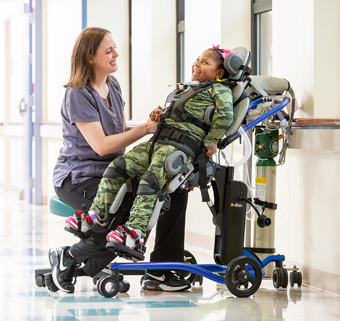Straps and Supports Poster Text
| December 2011Rifton Equipment is intended to help children achieve the highest possible level of independence and personal dignity. Straps and supports should be used only when they support this goal. General uses for straps and supports include:
- Postural Support: Some children need supports and straps to maintain their posture as they do activities with their head and hands, and to prevent developing deformities.
- Safety: Sometimes straps are needed to prevent children from falling out of equipment or injuring themselves (like the straps on a carseat).
General Guidelines
Never leave a child unattended when straps or supports have been applied. If a child needs a strap, then special supervision is required.
Use adequate straps/supports so the child cannot fall off equipment or slide down and be injured. If you are not sure how much support to use, consult with a therapist and consider the following points:
- Ask yourself if the support improves or limits the child’s ability to function in this position.
- Does the support allow movement where the child is able to control it?
- When a child is in one position for more than a few minutes, can good postural alignment be maintained, or would additional supports help to prevent deformities?
- Don’t leave a child in one piece of equipment or one position for a long period of time. Changes in position need to be part of the program.
Remember, the presence of a particular strap on a piece of adaptive equipment does not necessarily mean it must be used in all cases.
A Warning Against Restraints
Using straps, trays or supports to restrict a child's movement is considered behavioral restraint, which may raise ethical and legal issues for your facility. Rifton Equipment is not intended for this use. See the Purpose of straps and supports pdf for more resources.
Request a free poster with these guidelines for your facility




